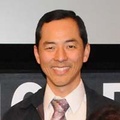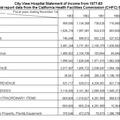Read Part 3 >>
THE ORIGINS OF JAPANESE HOSPITALS IN LOS ANGELES
The Japanese community in Los Angeles grew gradually, its growing size reflected in a gradual growth in numbers of physicians. Drs. Ikeuchi Kiyomatsu and Watahiki Tomomitsu both moved from San Francisco, with its older and more established Japanese community, to Los Angeles in 1901.1 By 1905, two more Japanese physicians arrived. In June of the next year, four of the pioneer physicians formed the Association of Japanese Physicians in Los Angeles.2
By 1915, seven Japanese physicians in Los Angeles served 6,000 Japanese compatriots.3 Two years previously, in 1913, Dr. T. Furusawa, P.M. Suski and Sho Inouye incorporated to form the Japanese Hospital within Los Angeles.4
The influenza epidemic of 1918 caused the Japanese in Los Angeles to suffer greatly. The Japanese community had few doctors, and limited hospital facilities; it is not known whether Dr. Furusawa’s “Japanese Hospital” was still in business at that time. After the crisis passed, the Japanese community decided to expand the clinic of a Dr. Tanaka, on Turner Street in Little Tokyo. They pooled their resources and incorporated the Japanese Hospital of Southern California in December of 1918.5
This facility gradually grew in size, reaching a 33-bed capacity with an operating room and laboratory. At its peak it employed a support staff of sixteen. It admitted all the patients of the Japanese doctors in the area, practicing an open staff system of admissions.6
By 1926, Los Angeles’ Japanese numbered 23,000 persons.7 The number of Japanese physicians had by then increased to thirty-five. Some of these were Nisei—American-born Japanese—who were graduating from medical schools but finding difficulties in obtaining hospital residencies.
On November 23, 1926 a group of five resident Japanese physicians applied to incorporate as the Japanese Hospital of Los Angeles. The articles of incorporation stated that its purpose included establishing a home for resident physicians and nurses, a general hospital equipped with an operating room, and “equipment of every kind and description necessary to the operation and conduct of said hospital.”8
Nothing was unusual about this request, for Japanese residents had been incorporating themselves to form hospitals in California for many years. Incorporation enabled them to lease adequate amounts of land for such hospitals. However, Secretary of State Jordan denied the request, contending that “aliens ineligible for citizenship” were not allowed the right to incorporate, under a 1911 treaty between the U.S. and Japan. Why was this right suddenly being challenged?
It turned out that the Secretary of State, among others, was then engaged in pursuing escheat actions against the Japanese, as part of a statewide anti-Japanese movement in the years leading up to World War II. Escheat actions were aimed at hampering the economic freedom of the Japanese by taking away rights that they previously enjoyed. Japanese were at that time ineligible for citizenship, as were all Asians.
Under the Act of March 26, 1790, naturalization privileges were restricted to “any alien, being a free white person…”. Asians were not considered to fall within the definition of “free white person.”9 The Japanese therefore enjoyed only those rights reserved to them by the Treaty of Commerce and Navigation of 1911 between the U.S. and Japan. This treaty stated that subjects of either nation had the right “to do anything generally incident to or necessary for trade upon the same terms as native citizens or subjects, submitting themselves to the laws and regulations there established.”10 The state contended that since the right to incorporate was not explicit in the treaty, it therefore did not exist.
The five physicians, led by Dr. Kikuo Tashiro, thought otherwise. They filed for a writ of mandate to compel Secretary of State Jordan to file their articles of incorporation in January of 1927 and took their case to the California State Supreme Court. They argued against the strict interpretation of the Treaty provision given by the state, arguing instead that a liberal construction of the treaty was necessary to carry out its intent.
On May 20, 1927, the California Supreme Court concurred with the physicians, saying:
We are of the opinion that the right of Japanese subjects residing in this state to form a corporation for the purpose of leasing real property upon which to operate and maintain a hospital is within the reasonable intent of the Treaty of 1911. Such a right is therefore not within the prohibitions contained in the Alien Land Law of this state, but is expressly recognized by the terms thereof.11
The Secretary of State appealed the case to the United States Supreme Court. On November 19, 1928, the U.S. Supreme Court announced its decision, stating that an interpretation of the treaty:
which concedes the authority of Japanese subjects to operate a hospital but would deny to them an appropriate means of controlling so much of the earth’s surface as is indispensable to its operation, does not comport with a reasonable, to say nothing of a liberal, construction.12
Indeed, the court went on to state that:
It would be difficult to select any single agency of more universal use or more generally recognized as a usual and appropriate means of carrying on commerce and trade than a business corporation.13
California finally approved the articles of incorporation on February 2, 1929, after a delay of more than two years. An interesting aside is that, since the treaty stipulation only reserved the right to carry on commerce, the new hospital had to be organized as a commercial venture. Therefore, Dr. Tashiro gained the title of corporate president instead of hospital director, and the hospital was a proprietary hospital instead of a non-profit hospital.
Having overcome legal adversity, the physicians next had to contend with economic adversity, for the stock market crash of October 24, 1929 was near.
The corporation began its fundraising efforts. It received wide support throughout the entire Southland Japanese community, including nearly all the local Japanese physicians. These combined efforts by the physicians and the community raised a sum of $129,000 for the construction of the hospital. In fact, since the original articles of incorporation had only allowed for $100,000 in stock to be raised, the board of directors in November 1929 voted to double the capital stock of the corporation to $200,000 to accommodate the extra contributions.14
A commemorative opening ceremony was held on December 1, 1929 with Dr. Tashiro and others giving speeches for an hour, followed by public tours of the new two-story structure. It contained forty-two beds, three operating rooms, an x-ray room, a laboratory, and a dietary service that provided traditional Japanese dishes. It had obstetrical, medical and surgical beds. The staff physicians and nurses were Japanese speaking and communicated well with the Japanese patients. Its chief surgeon was none other than Dr. Tashiro himself, who was known among the local medical community at large for the speed and skill of his surgical techniques.15
The December 6, 1929 issue of the Rafu Shimpo compared the new Japanese Hospital of Los Angeles with the more established Japanese Hospital of Southern California:
The existence of two hospital facilities in the community is a blessing to both physicians and patients. The birth of a new hospital in the community will help stimulate the renovation and improvement of the old hospital.16
Actually, the two facilities were destined to coexist for only five and a half years.
No known reason is recorded to explain the merger of the two hospitals in July of 1935. Many anecdotes suggest that the Japanese patients could not afford to pay for their medical care. This was the case for other Japanese hospitals in California as well. For example, Agnes Hospital in Sacramento closed in 1932 or 1933 “because of bills that were outstanding and no real way of collecting from the Japanese patients who were not able to pay their bills.17 It is likely that these same factors reduced the capacity of the community to support two hospitals. Or perhaps the older facility could not compete with more the more modern one. In any case, the Japanese Hospital of Southern California in Little Tokyo ceased to exist, merging into the Japanese Hospital of Los Angeles in Boyle Heights.
Notes:
1. Hasegawa., op. cit., Book IV, p. I-37.
2. Ibid.
3. Ibid.
4. Articles of Incorporation, Stockton Hospital, Jan. 10, 1922, California State Archives, Office of the Secretary of State, Sacramento.
5. Hasegawa, op. cit., Book IV, p. I–40.
6. Ibid.
7. Hasegawa, op. cit., Book IV, p. 2-89.
8. Articles of Incorporation, Japanese Hospital of Los Angeles, Nov. 23, 1926, California State Archives, Office of the Secretary of State, Sacramento.
9. Frank F. Chuman, The Bamboo People: The Law and Japanese Americans (Del Mar, California: Publisher’s Inc., 1976), p. 6. See also 1 Stat 103, March 26,1790.
10. California Supreme Court, Tashiro v. Jordan, May 20, 1927. MS, p. 4. California State Archives, Office of the Secretary of State, Sacramento.
11. Ibid., p. 9.
12. 278 U.S. 129.
13. 278 U.S. 130.
14. Articles of Incorporation, Japanese Hospital of Los Angeles, Feb. 2, 1929, Amendments of March 10, 1930, MS. California State Archives, Office of the Secretary of State, Sacramento.
15. Hasegawa, op. cit., Book IV, p. 2-98.
16. Rafu Shimpo, Dec. 6, 1929.
17. Wayne Mayeda, “Japanese in Sacramento,” manuscript report for the Sacramento Ethnic History Project, Sacramento Museum and History Division, 1983, p. 57.
© 1986 Troy Tashiro Kaji




